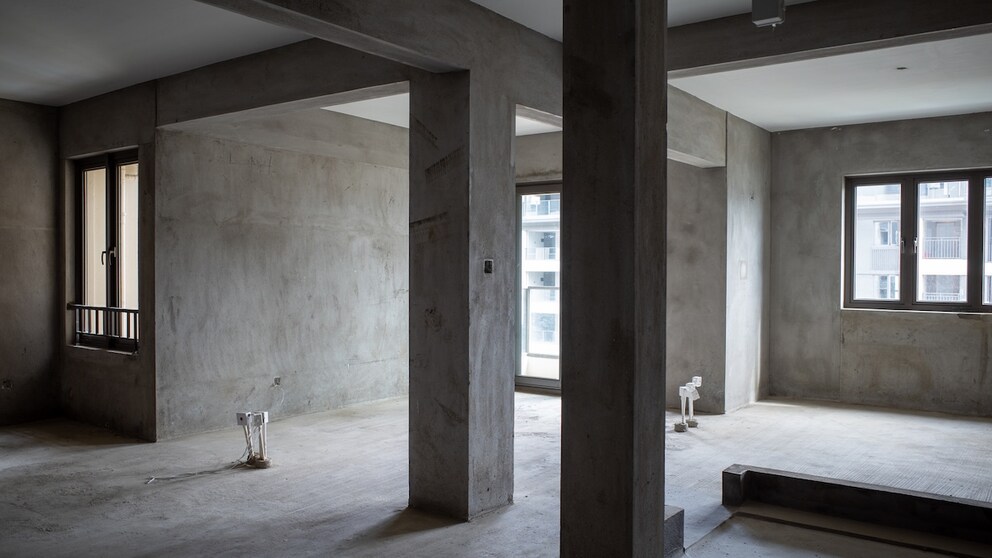February 24, 2025, 3:03 pm | Read time: 4 minutes
Precast ceiling panels are available in various designs. They offer a quick and efficient solution for installation. Why is this construction method so recommendable? myHOMEBOOK author Daniela Matsuzaki presents the advantages.
Thanks to their easy handling and quick installation, precast ceiling panels are a preferred choice for building contractors and architects. But builders themselves can also benefit from them.
Overview
What Are Precast Ceiling Panels?
A precast ceiling panel is a specially developed ceiling that has been developed specifically for the efficient construction of buildings. Instead of being manufactured on-site, they are produced in a factory under controlled conditions. This enables consistently high-quality and precise processing. These panels are usually made of concrete, wood, or brick. They are manufactured in such a way that they can be installed quickly and easily on the construction site, which significantly simplifies the construction process.

Modern Heating Study Shows How to Make Heat Pumps Even More Efficient

Experts Clarify Heat Pump in an Apartment Building? The Most Important Questions and Answers

Current Research Report Increased Fire Risk Due to Solar System? Study Shows Correlations
Advantages of Precast Ceiling Panels
1. Construction Time Is Shortened
With precast ceiling panels, builders can significantly reduce the construction time and simplify the construction process at the same time. These elements are already fully produced and tailored to the specific project before being delivered directly to the construction site. This allows builders almost completely to bypass the lengthy on-site process of casting and curing.
Compared to conventional construction methods, where the slabs are often cast directly on site, this not only saves time but also labor and resources. In addition, longer waiting times must be expected with conventional production, as concrete, for example, has to be cured before it can be removed from the formwork. Additionally, the formwork can obstruct the progress of subsequent construction activities. Furthermore, the installation process must be completed in multiple stages and typically requires multiple workers.
2. Installation Is Faster
As precast ceiling panels are produced under controlled conditions in the factory, they are usually completely finished when they arrive on site and do not need to be smoothed or cast. The prefabricated components can be installed directly. They are also delivered in the appropriate sizes and can be positioned on the prepared load-bearing walls with the aid of a crane. This process often takes just a few hours. Additionally, certain precast ceiling panels can be installed in various weather conditions, potentially accelerating the installation process.
3. Durable and Easy to Maintain
Thanks to their precise manufacturing method, precast ceiling panels are particularly durable and offer a robust solution for all kinds of construction projects. Industrial production under controlled conditions gives them a consistently high quality, making them more resistant to loads and environmental influences. They are often more robust and less susceptible to cracks, deformations, and other damage that can occur with conventional ceilings.
Precast ceiling panels also score highly in terms of maintenance. Due to their high stability and resistance to damage, they require fewer repairs over time. This not only saves costs in the long term but also minimizes the effort required for repairs or renovations. The dense surface of these panels typically offers less susceptibility to moisture and wear, thereby extending their service life.
4. Flexibility
Precast ceiling panels are flexible, as they can be used to create versatile solutions for different construction projects. Even before construction, they can be adapted to the building in question, be it in terms of shape, size, or load-bearing capacity. Openings for staircases, shafts, or technical installations such as ventilation or electrical systems can be integrated in the factory. This can simplify the construction process considerably.
They also allow freedom of design. They can be used uncovered for an industrial look or covered with plaster, paint, or cladding as desired. Their standardized design also offers numerous advantages for future modifications or expansions, as it facilitates easy implementation of changes.
5. Safety
As precast ceiling panels are manufactured under controlled conditions in the factory, they come with a high level of safety. They also comply with the applicable building regulations and are of consistent quality. As they are manufactured with precision and robust materials are used, they are also particularly strong and resistant to loads, which is important for house construction. Moreover, the industrial production process helps to minimize construction errors.
6. Sustainability of Precast Ceiling Panels
Precast ceiling panels are a sustainable choice for house construction as they reduce material consumption and construction waste. The efficiency of factory production allows for optimal resource utilization and minimizes material waste. Furthermore, their robust construction results in a reduced need for repairs over the long term, which can positively affect the environment. Additionally, energy savings are achieved due to the shorter construction time, which necessitates fewer machines and reduces transportation demands. Precast ceiling panels enable not only a more economical and rapid building process but also promote a construction approach that is environmentally friendly, conserves materials, and is sustainable.

